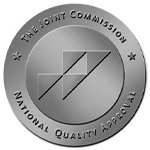
Seasonal affective disorder is defined by the Mayo Clinic as a type of depression that’s related to changes in seasons. Symptoms typically start in the fall and continue into the winter months, when many people experience having less energy and feeling moody during this time of year.
Trond Harman, a therapist and Licensed Clinical Social Worker at Keystone Pediatrics Chambersburg, discusses causes, symptoms and treatment for seasonal affective disorder in today’s Take Care article.
Here in Pennsylvania, we just learned from our friend Punxsutawney Phil, aka the groundhog, that we will indeed have six more weeks of winter this year. Phil has been predicting this since sometime around February 2, 1840. The legend is, there will be an early spring if he does not see his shadow or there will be six more weeks of winter if he does see his shadow. If you are a fan of winter, meaning you enjoy cold weather, dark days, skiing, snowboarding, etc., you might always root for Phil to see his shadow. However, many of us are not fans of these long, cold, dark days for many reasons, but perhaps the most important is because many people suffer from seasonal affective disorder, or SAD.
Symptoms
Symptoms of seasonal affective disorder begin and end at about the same times every year. SAD is commonly associated with the fall through winter months, especially with the drop off in people’s moods following the holiday season, but it can occur at any time of year. It is important to not just brush off these symptoms as the “winter blues” or a seasonal funk, but to take steps to keep your mood and motivation steady throughout the year. This is even more important if you are someone who already suffers from depression, as seasonal affective disorder will exacerbate your already intense symptoms.
Some symptoms of SAD may include feeling listless, sad or down many days, loss of interest in once enjoyable activities, low energy or feeling sluggish, sleeping too much, eating issues which may include craving carbohydrates, experiencing weight gain or overeating, problems concentrating, feeling hopeless, worthless or guilty and having thoughts of not wanting to live. People who experience SAD in the spring and summer months often report symptoms of insomnia, poor appetite, weight loss, agitation or anxiety and increased irritability. Complications from SAD can lead to social withdrawal, school or work problems, substance use, other mental health issues and suicidal thoughts or behaviors.
Causes
One cause of SAD is a change to your body’s circadian rhythm because of the decreased sunlight. Sunlight is important for helping to manage depression because it causes the body to release more serotonin, which helps the body to feel calm, focused and to have a boosted mood. Melatonin levels in the body are disrupted by changes in seasons as well, which plays a role in sleep patterns.
There are risk factors associated with seasonal affective disorder. The first is having a family history of relatives who suffer from SAD or have another form of depression. Secondly, as mentioned earlier, those who have major depression or bipolar disorder may experience worsening symptoms of depression with the changing of seasons. Living far from the equator either to the north or south has an impact on how seasonal changes impact the body, as there are shorter days during the winter and longer days during the summer. Finally, lower levels of vitamin D, which is produced when your skin is exposed to sunlight, creates a risk for developing seasonal affective disorder. Vitamin D can help boost serotonin activity.
Treatment
While there is no known way to prevent SAD, it is important to take steps to prevent symptoms from getting worse over time. The first step is to realize that you struggle with seasonal affective disorder so you can start managing it before the symptoms begin. When the weather permits, spending time outdoors in the sunlight can be a good treatment aid. Many people report an improvement in symptoms when they are able to get outside during the day or increase the amount of sunlight that enters their home or office. Light therapy using a special lamp has also been shown to be an effective treatment option. LED (light-emitting diode) light therapy is a non-invasive treatment that enters the skin’s layers and can help regulate melatonin and serotonin levels. Antidepressant medications are sometimes recommended by providers either alone or with light therapy.
Research shows that cognitive behavioral therapy, or CBT, is an effective treatment for SAD. This is a type of talk therapy, and it produces the longest-lasting effects of any treatment approach. Finally, a vitamin D supplement can help improve symptoms, but with this treatment option, and with most of the ones that have been discussed already, you need to talk with your healthcare provider before beginning them. It is also important to remember that if your symptoms become unmanageable and you find yourself in a state of crisis, call either 9-1-1 or 9-8-8 to get help immediately.
Seasonal affective disorder impacts our bodies in many ways, and it can be scary to try and get through these feelings alone. Always remember there is help available and do not be afraid to ask. Together, we will get through these obstacles.
This article contains general information only and should not be used as a substitute for professional diagnosis, treatment or care by a qualified health care provider.




